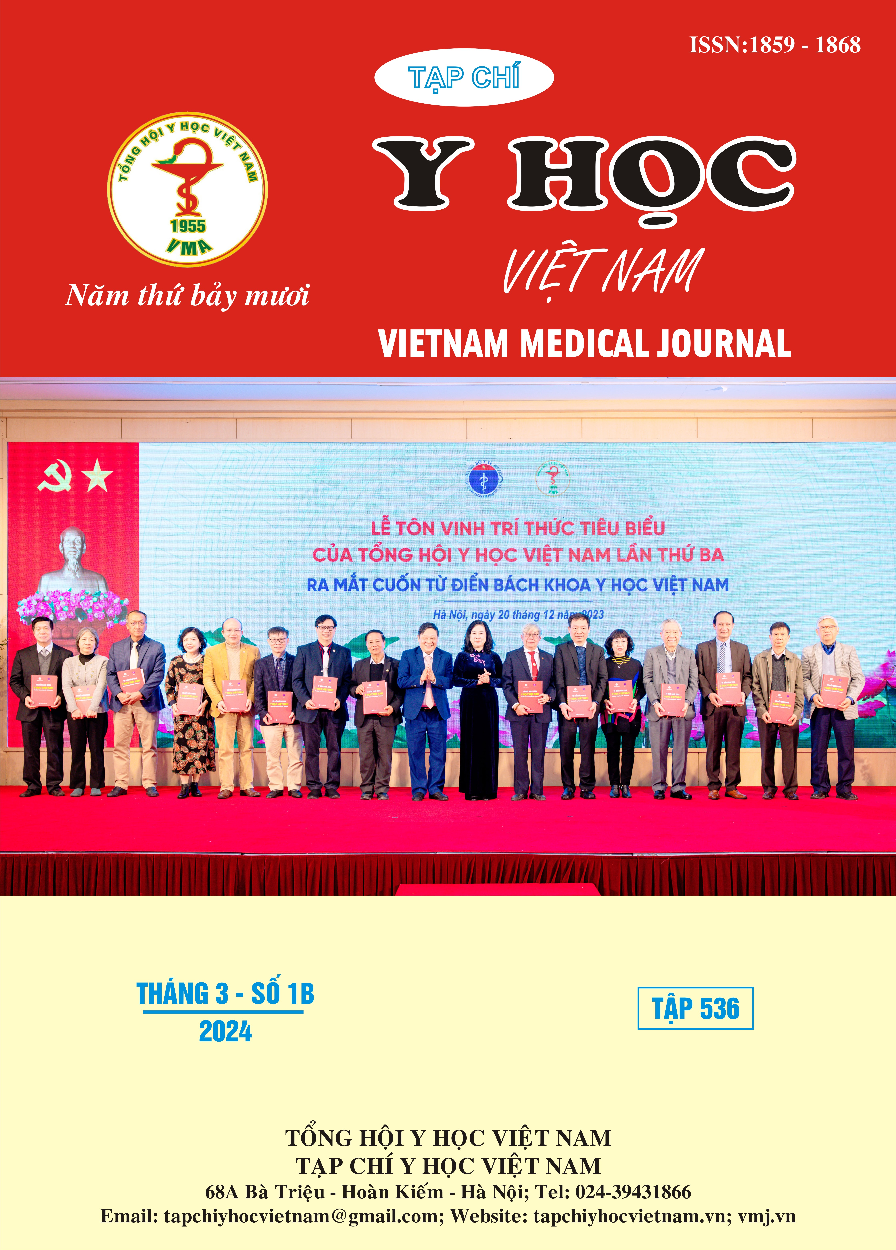PROGNOSTIC FACTORS FOR CLINICAL RECOVERY IN ACUTE ISCHEMIA STROKE PATIENTS TREATED WITH STENT RETRIEVER THROMBECTOMY
Main Article Content
Abstract
Background: Endovascular thrombectomy with a mechanical device has been an effective method of treatment in acute ischemic stroke, an important heath issue in the world1,2. In Vietnam, there are few studies investigating the prognostic factors of clinical recovery after thrombectomy with mechanical instruments. Objective: To identify prognostic factors for clinical recovery at 3 months after treatment in this group of patients. Methods: In a retrospectivelongitudinal study, we recruited 70 cases of acute cerebral infarction treated with mechanical thrombectomy and describe the outcome after treatment in this group of patients. The primary study variable was the functional status score (mRS) at the 3rd month post-stroke. Results: The rate of patients with good clinical recovery at 3 months after treatment with mRS 0-2 was 58,6% (41 patients), while the mortality rate was 11,4% (7 patients). Independent prognostic factors for clinical recovery at 3 months post-treatment included intracerebral hemorrhage (p=0,004), NIHSS at admission (p=0,010) and time to onset-intervention (p=0,049). Conclusions: Independent prognostic factors for clinical recovery at 3 months post-treatment included NIHSS at admission, time to onset-intervention, and intracerebral hemorrhage.
Article Details
References
2. Nhị VA, Bình PN. Đánh giá tính an toàn và hiệu quả phương pháp lấy huyết khối bằng dụng cụ cơ học solitaire ở bệnh nhân đột quỵ thiếu máu não. Y học TP. Hồ Chí Minh. 2014; tập 18, phụ bản của số 1, tr.473-478.
3. Yoon W, Seul KK, Man SP, et al. Predictive Factors for Good Outcome and Mortality After Stent-Retriever Thrombectomy in Patients With Acute Anterior Circulation Stroke. Journal of Stroke. 2017;19(1):97-103.
4. Daou B, Chalouhi N, Starke RM, et al. Predictors of Outcome, Complications, and Recanalization of the Solitaire Device: A Study of 89 Cases. Neurosurgery. 2015;77(3):355-360.
5. Jiang S, Fei A, Peng Y, Zhang J, Lu Y-r, Wang H-r, et al. Predictors of Outcome and Hemorrhage in Patients Undergoing Endovascular Therapy with Solitaire Stent for Acute Ischemic Stroke. PLoS One. 2015;10(12):e0144452.
6. Long NT, Thắng NH, Chỉnh DĐ. Các yếu tố ảnh hưởng tiên lượng kết quả điều trị bệnh nhân nhồi máu não cấp do tắc mạch lớn tuần hoàn não trước được điều trị bằng tiêu sợi huyết tĩnh mạch và lấy huyết khối cơ học. Tạp chí Y Dược lâm sàng 108. 2017; số 12, tr.72-77.
7. Bruce CVC, Michael DH, Marta R, et al. Safety and Efficacy of Solitaire Stent Thrombectomy Individual Patient Data Meta-Analysis of Randomized Trials. Stroke. 2016;47:798-806.
8. Saver JL, Goyal M, van der Lugt A, et al. Time to treatment with endovascular thrombectomy and outcomes from ischemic stroke: a meta-analysis. JAMA. 2016;316 (12):1279-1288.


